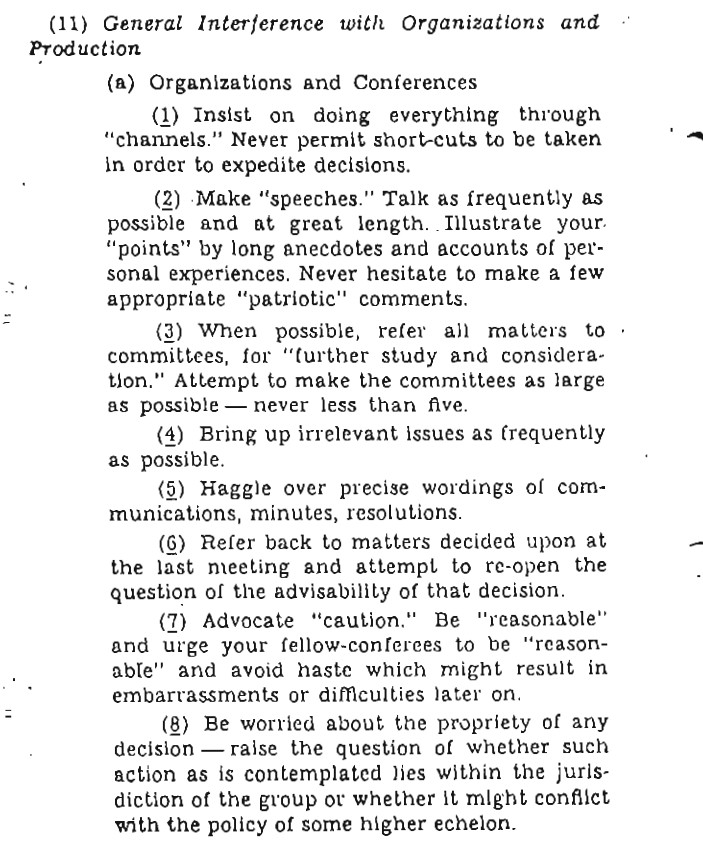Don't self-sabotage during meetings
By Nick Touran, Ph.D., P.E., 2024-01-24 , Reading time: 1 minute
What Happened
In 1944, the OSS (predecessor to the CIA) published a booklet [1] describing how to introduce friction into professional settings via corporate sabotage. Inefficiency and bad work can reduce morale and delay deployment of low-carbon and low-pollution energy facilities, harming both institutional efficacy as well as global public health. By understanding what professional civilian saboteurs do, we can learn to recognize ineffective processes within our own organizations.
Some examples of sabotage included in the booklet as related to meetings are as follows. You may find some of these surprisingly familiar to a typical meeting in highly regulated industries.

Lessons
- Spend the time to include detailed meeting agendas in meeting invites, and stick to them
- Maintain a focus on action during meetings: it’s not about what you know, it’s about how to proceed.
- Always track meeting discussion and actions in written meeting minutes, and refer to previous minutes in the agendas for follow-up meetings. If an action is required for a future meeting, ensure that this meeting is referred to in the follow-up meeting’s agenda and minutes.
- Ensure a meeting chair is empowered to cut off-topic discussions short, enforce adherence to the agenda, and make final decisions if there is serious conflict.
References and additional reading
This page is a part of our Safety Minute collection. You can edit it or add more on GitHub.